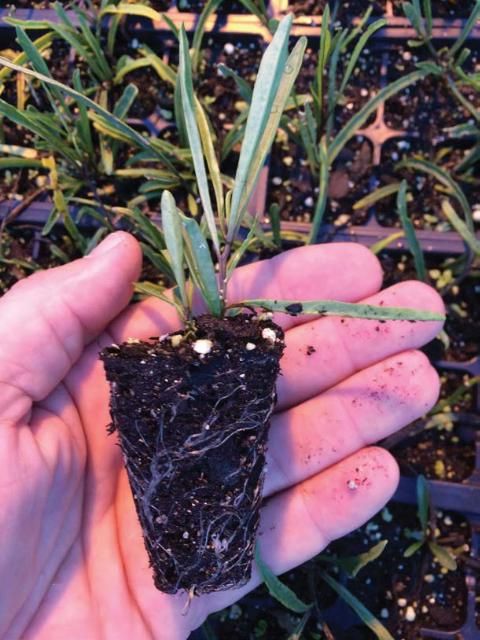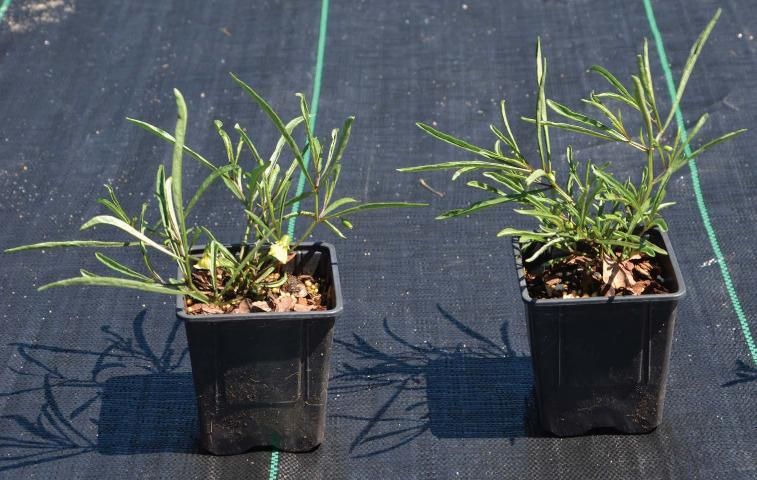Note: This fact sheet is also available as a chapter in a comprehensive manual titled Dune Restoration and Enhancement for the Florida Panhandle, available in pdf form here: https://edis.ifas.ufl.edu/pdffiles/SG/SG15600.pdf. Please see the manual for more information about other useful and attractive native plants for dunes and for further information about restoration and preservation techniques.
Solanaceae

Credit: Gabriel Campbell, UF/IFAS
Coastal groundcherry occurs on beach dunes, coastal grasslands, coastal scrub, and disturbed areas. This plant is found throughout coastal counties on the west coast of Florida—except for the Big Bend region and the extreme southeasternmost counties—and more broadly west to Louisiana. Threatened and endangered beach mice and many other animals rely on this plant as a food source. Plants can be longed-lived and form relatively thick tuberous roots. Coastal groundcherry can hybridize with other Physalis species, particularly with P. viscosa, and has long frustrated plant taxonomists because of the inherent variation within the genus (Sullivan 1985).
General Description
Coastal groundcherry is an herbaceous perennial that forms thickened tuberous roots and stolons to spread asexually belowground, creating a sparse groundcover. Leaves are simple, alternate, linear, usually longer than 7 cm, mostly 8 times longer than wide, and glabrous. Inflorescences are solitary, axillary and bell- to wheel-shaped with a yellow corolla, occurring most months in frost-free areas. Fruits are yellow to orange edible berries that resemble a miniature tomatillo, being surrounded by a papery husk that looks like a tiny lantern.
Propagation
Stem cutting propagation of coastal ground cherry is readily accomplished from 4- to 6-in cuttings. Plants do not require auxin application to initiate roots, though auxin may decrease the time to rooting and improve rooting uniformity. Cuttings are placed under intermittent mist with root formation occurring within 2 weeks. Rooted cuttings should be removed from mist at the first sign of rooting, or they will quickly deteriorate and express signs of foliar oedema. Hand water until plants form sufficient roots to hold the propagation substrate when they are removed from the propagation cell.
Propagation of coastal groundcherry from seed is also easily accomplished. Sow seeds on the surface of a standard greenhouse media, keep them moist, and expose them to a natural photoperiod. The authors found dry, cleaned seed stored at room temperature in glass jars retain viability for at least 5 years.

Credit: Mack Thetford, UF/IFAS
Van der Valk (1974) studied seed germination of a closely related species, Physalis walteri (Walter's groundcherry). Seeds were determined to need light to germinate at constant temperatures. Seeds can be germinated in dark only if they are exposed to alternating day/night temperatures (15/25 and 20/30°C). Germination was near 100%. Seeds can tolerate burial up to 2 cm.
Outplanting
Plants in 4-in pots with fully developed rootballs and canopies have successfully been outplanted by the authors. In a preliminary trial, when planted in July on open beach areas behind low frontal dunes, transplant success was 55%.
Plants grown in 4-in pots and in 72-cell flats with well-developed rootballs and canopies have been outplanted successfully by the authors in early February with greater than 75% survival after 3 months, though plants from 4-in pots had higher survival and were far more robust. Plants were outplanted on the backdunes at midslope at least 12 in from each other and from perennial grasses. Fertilizer application (½ tsp Osmocote 18-6-12) improved the aesthetic and increased biomass for this plant but was not necessary for survival.

Credit: Gabriel Campbell, UF/IFAS
Literature Cited
Sullivan, J.R. 1985. "Systematics of the Physalis viscoa complex (Solanaceae)." Systematic Botany 10(4):426–444.
Van Der Valk, A.G. 1974. "Environmental factors controlling the distribution of forbs on coastal foredunes in Cape Hatteras, National Seashore." Canadian Journal of Botany 52:1057–1073.